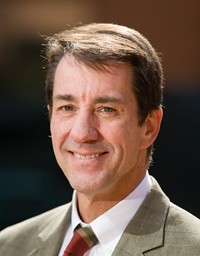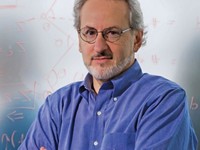Advertisement
Grab your lab coat. Let's get started
Welcome!
Welcome!
Create an account below to get 6 C&EN articles per month, receive newsletters and more - all free.
It seems this is your first time logging in online. Please enter the following information to continue.
As an ACS member you automatically get access to this site. All we need is few more details to create your reading experience.
Not you? Sign in with a different account.
Not you? Sign in with a different account.
ERROR 1
ERROR 1
ERROR 2
ERROR 2
ERROR 2
ERROR 2
ERROR 2
Password and Confirm password must match.
If you have an ACS member number, please enter it here so we can link this account to your membership. (optional)
ERROR 2
ACS values your privacy. By submitting your information, you are gaining access to C&EN and subscribing to our weekly newsletter. We use the information you provide to make your reading experience better, and we will never sell your data to third party members.
Drug Development
Movers And Shakers
Christopher Austin reflects on translational science at the NIH’s 10-year-old NCATS, now that he’s heading for the exit
Austin, founding director of the NIH’s National Center for Advancing Translational Sciences, is joining the venture capital firm Flagship Pioneering
by Asher Mullard, special to C&EN
May 1, 2021
| A version of this story appeared in
Volume 99, Issue 16

Christopher P. Austin has faced an uphill battle as director of the US National Institutes of Health’s National Center for Advancing Translational Sciences (NCATS) since the moment he stepped into the role in 2012.
NCATS was tasked with finding ways to streamline the yearslong process of discovering and developing new drugs—be it by figuring out how to expedite preclinical candidate selection and toxicity testing, reviving drugs that had stalled in the clinic, or eking more out of a clinical trial consortia.
But at its beginning, the center had an annual budget of only $575 million, over half of which was earmarked for Clinical and Translational Science Awards (CTSAs), which enable medical research institutions to train translational workforces and run clinical trials. Multinational pharmaceutical companies with much bigger R&D budgets were making little headway with the same complex scientific problems, prompting some to wonder what NCATS could add. Further complicating matters, the new center was beset by critics concerned that NCATS’s ambitions in applied science were at odds with the NIH’s basic-research mandate.
Vitals
▸ Birthplace: Baltimore
▸ Education: AB, biology, Princeton University, 1982; MD, 1986, Harvard Medical School; resident, internal medicine, neurology, Massachusetts General Hospital
▸ Favorite opera: I have to go conventional with The Magic Flute. But I hate that question.
▸ Favorite plant: Tree peonies. They’re just absolutely freaking gorgeous.
▸ Last book he read:The Gallic Wars, by Julius Caesar. It’s just fan-freaking-tastic.
▸ COVID-19’s silver lining: The community has realized that if we work together, we really can get more treatments to more people more quickly.
For Austin—a neurologist, geneticist, former drug hunter at Merck & Co., and opera singer —the center’s first decade was nevertheless marked by improbable successes. In his last days before heading to the venture capital firm Flagship Pioneering, he spoke with C&EN about how NCATS has showcased the power of translational science with its work on tissue chips, drug repurposing, and COVID-19 clinical trials. Questions and responses have been edited for length and clarity.
How do you rate NCATS’s first 10 years?
We have accomplished more in 10 years than I thought possible. Everyone thought that some—or all—of the things we wanted to do at NCATS had been tried before and had failed. It was looked on by some as a scientific Charge of the Light Brigade, just a suicide mission. What we discovered was that many of these questions really had never been asked the way we were asking them: the more diverse the teams we put together, the more improbable the successes. It turned out to be more of a greenfield space than I had expected.
Tissue chips are an example. In 10 years we went from nothing to an entire field of these three-dimensional bioreactors that represent the structure and function of human tissues on a chip.
On the topic of tissue chips: researchers have long viewed them as a useful tool for screening drug candidates for toxicities—and hope they can one day reduce the reliance on preclinical animal studies. But the tool has yet to be incorporated into regulatory filings for novel drugs. How far off is that?
We know that a lot of companies are using data from tissue chips in their drug development programs, but they are using these as supporting data. What hasn’t been done—and what we’d hoped would have happened—is that the US Food and Drug Administration would see their way clear to allowing toxicity testing not just in two animal species but also in one species and on a chip.
I think the FDA is right in not allowing [chip-based toxicity testing to replace some animal testing] yet. There is a lot of great evidence that we can retrospectively reproduce toxicity signals that have been found in animals and humans with tissue chips. But there is a priori knowledge of what the toxicity signal is going to be. And toxicity signals can be idiosyncratic. With rats, you get around this by sectioning the animal from nose to tail: if there happens to be some screwy thing in some part of a thymus, you’ll see it. With tissue chips, you have to have a chip for every organ, every developmental stage, and every potential toxicity signal. We just haven’t figured out how to do that yet.
We’ve realized that it is a lot easier to use tissue chips to look for efficacy, to screen drugs, and to optimize candidates, because you know what you’re looking for. These are really important scientific goals, but they’re not regulatory.
In another central program, NCATS worked with pharmaceutical partners to facilitate the repurposing of compounds with proven safety track records and some clinical data into new indications. How did this effort fare?
I am proud of that program. The purpose of NCATS was not to actually do every possible project that could be done with any technology; it was to develop the technology, show it can work, and show other people how to work it. That’s really what happened with repurposing. We created these template agreements that shorten the negotiation time between pharmaceutical companies and academic researchers—establishing this sort of Match.com mechanism where drug companies can make the drugs available and then people can swipe left or swipe right. And then they didn’t need us anymore, because they could start meeting themselves.
Now we are asking people to show us a repurposing technology that they think is generalizable—be it a screening approach, a computational approach, or otherwise—and then we will fund clinical trials to show that the technology either works or doesn’t in humans.
What do you make of concerns that “hypothesis-free” repurposing—when drugs are screened for repositioning without preconceived ideas about mechanisms of action—has delivered few if any new drugs over the past 50 years?
There is some truth to this, but a lot of that has to do with the things that come after science: regulatory factors, legal issues, paying for the clinical trials, access to drugs, who can change the label. We’ve been working on the problems of off-patent repurposing, which are really not scientific.
What lessons has NCATS taken from the COVID-19 pandemic?
One thing COVID has shown us is that we need stable, expert, disease-agnostic clinical trial capacity in this country. That’s what our CTSAs provide. The CTSAs are supporting two of the largest convalescent plasma trials for COVID-19, as well as the ACTIV-1 trial and the upcoming ACTIV-6 [trial of treatments for COVID-19].
This hub has also allowed us to set up an unprecedented informatics program called N3C [an open-science effort that allows researchers to explore harmonized patient-level data from across multiple clinical research centers]. There are data on 1.1 million COVID-positive patients in that enclave. It just is so far above any other platform in terms of its comprehensiveness and size. I think that’s the kind of thing that is possible with the CTSAs.
What has been your biggest challenge leading NCATS?
NCATS was started for scientific reasons, but it does create problems with policy makers who really don’t understand what NCATS does. And I’d say that’s been the biggest challenge. I underestimated how little well-educated scientific and medical policy experts and the public understood about where drugs and devices and other interventions come from. It’s been an interesting communication journey. It still is.
Why are you taking on a partner role at Flagship now?
NCATS is now firing on all cylinders. While a rational person might say, “I built this Lamborghini and I’m going to drive it for the rest of my career,” I’m not built that way. I say, “What’s the next burning building to run into?”
Complex genetics of common and rare diseases was my first love. But companies have gotten out of the big diseases that are the major causes of global morbidity and mortality. That’s what I’m going to work on. I’m going to be a CEO-partner at Flagship, which means I’ll [also] be a CEO of a really nascent company. And this will allow me to do things that I can’t do here. One of which is—and I don’t mind saying this—to cross the finish line with therapeutics that will actually get to patients. That’s the entrepreneurial itch that I have.
Asher Mullard is a freelance writer based in Ottawa, Ontario.





Join the conversation
Contact the reporter
Submit a Letter to the Editor for publication
Engage with us on Twitter